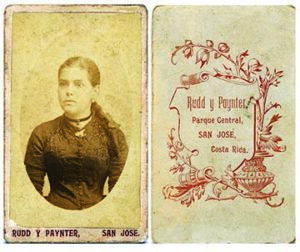POSITIV NEGATIV

Positiv Negativ aims is an space to talk about preservation, conservation, and restoration of photographic materials. Entries are related to the history of photography, photographic processes, or about projects the blog’s author participated. The name, Positiv Negativ, refers directly to the nature of photographic processes. The lack of the last letter is intentional, so an “o” can change in Spanish to Positivo Negativo, or an “e” in English: Positive Negative. These are the languages spoken in the countries that are the author’s home: Costa Rica and the United States.
Photographic archives allow studying the materials used for the negatives and their positive, from the chemical reagents, processes, and papers employed, to the ways of presenting the photographs. These objects (product of the use of a lens and a camera), allows for a greater understanding of the evolution of photographic equipment and the history of photography. Likewise, the images are part of the visual history of a place.
Like a book or family jewel, these documents reveal the style of the photographers and the personal marks they left on their surface, like numbers and signature, are the few sources of information that allow studying a photographer from the late nineteenth and early twentieth century.
Readers are invited to participate in a discussion about the topics presented here.
Cheers,
—Alejandra
The topics covered in this blog are points of inflection between old photography techniques and modern ones. While the preservation of photography files is more accessible with digital technologies, the original documents are the primary source of information
We invite you to participate in this dialogue, to share your experiences, and to suggest topics for future conversations. This blog has no profit objectives.
